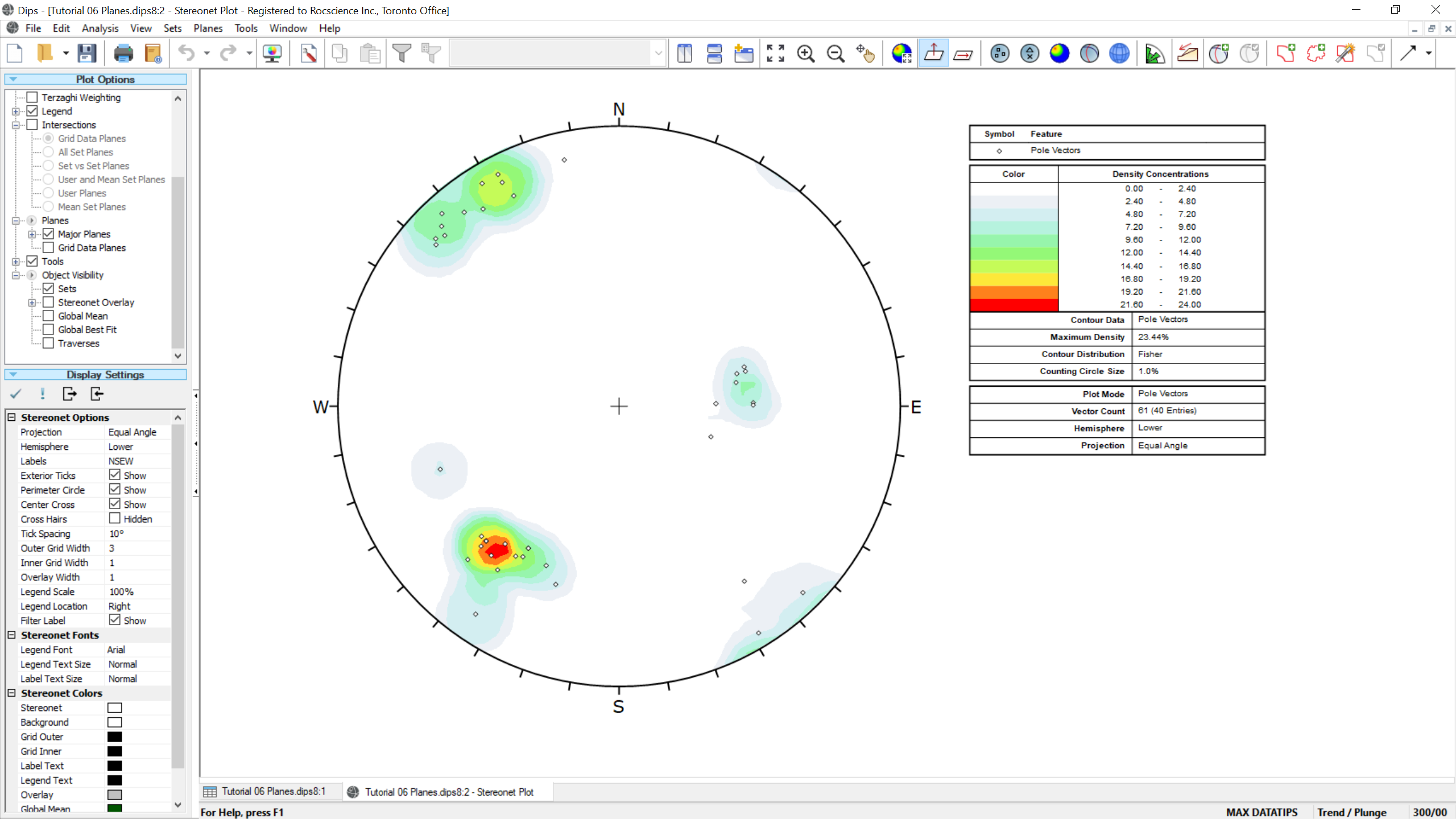6 - Planes
1.0 Introduction
This tutorial covers the addition of user-defined Planes (i.e., User Planes) in Dips.
Topics Covered in this Tutorial:
- Add User Plane
- Major Planes Plot
Finished Product:
The finished product of this tutorial can be found in the Tutorial 06 Planes.dips8 file, located in the Examples > Tutorials folder in your Dips installation folder.
2.0 Model
If you have not already done so, run Dips by double-clicking on the Dips icon in your installation folder. Or from the Start menu, select Programs > Rocscience > Dips > Dips.
If the Dips application window is not already maximized, maximize it now, so that the full screen is available for viewing the model.
Dips comes with several example files installed with the program. These example files can be accessed by selecting File > Recent Folders > Examples Folder from the Dips main menu. This tutorial will use the Example.dips8 file to demonstrate the basic plotting features of Dips.
- Select File > Recent Folders > Example Folder
 from the menu.
from the menu. - Open the Example.dips8 file. Since we will be using the Example.dips8 file in other tutorials, save this example file with a new file name without overwriting the original file.
- Select File > Save As
 from the menu.
from the menu. - Enter the file name Tutorial 06 Planes and Save the file.
You should see the Stereonet Plot View shown in the following figure.
If you do not see the plot below, then use the Sidebar Plot Options to view pole vectors and contours on the stereonet.

3.0 Adding a Plane
Let’s first add a plane to the stereonet. The Add User Plane option allows you to graphically add a pole / plane to a stereonet plot.
- Select Add User Plane
 option from the toolbar or the Planes menu.
option from the toolbar or the Planes menu. - Move the cursor over the stereonet. When the cursor is INSIDE the stereonet, an arc or “great circle” representing the plane corresponding to the cursor location (pole) will appear. Move the cursor around the stereonet, and observe the position of the corresponding plane.
Note that the cursor coordinates are visible in the status bar. The coordinate display convention can be changed by clicking on the orientation convention option in the Status Bar at the lower right corner of the screen, i.e. Trend / Plunge (pole vector), Dip/DipDirection (plane vector), Strike/Dip (plane vector). - When the plane / pole is at a desired orientation (approximately Trend / Plunge = 45 / 230), click the left mouse button inside the stereonet.
- In the Add User Plane dialog:
- Enter ID = 1
- Enter Label = slope face
- Modify the graphically entered Orientation (if necessary). Enter a Trend / Plunge = 45 / 230
- Leave the Visibility check boxes at their default selections.
- Select OK.

The plane / pole will be displayed on the plot, according to the visibility settings chosen, as shown in the figure below.

The visibility settings that you choose in the Add User Plane dialog can be modified at any later time in the Edit User Planes dialog.
Planes created with the Add User Plane  option in Dips are referred to as User Planes or Added Planes, to distinguish them from Mean Set Planes calculated from Sets. (Sets and Mean Set Planes are discussed in the next section).
option in Dips are referred to as User Planes or Added Planes, to distinguish them from Mean Set Planes calculated from Sets. (Sets and Mean Set Planes are discussed in the next section).
This concludes the tutorial. You are now ready for the next tutorial, Tutorial 08 - Kinematic Analysis (Flexural Toppling) in Dips.